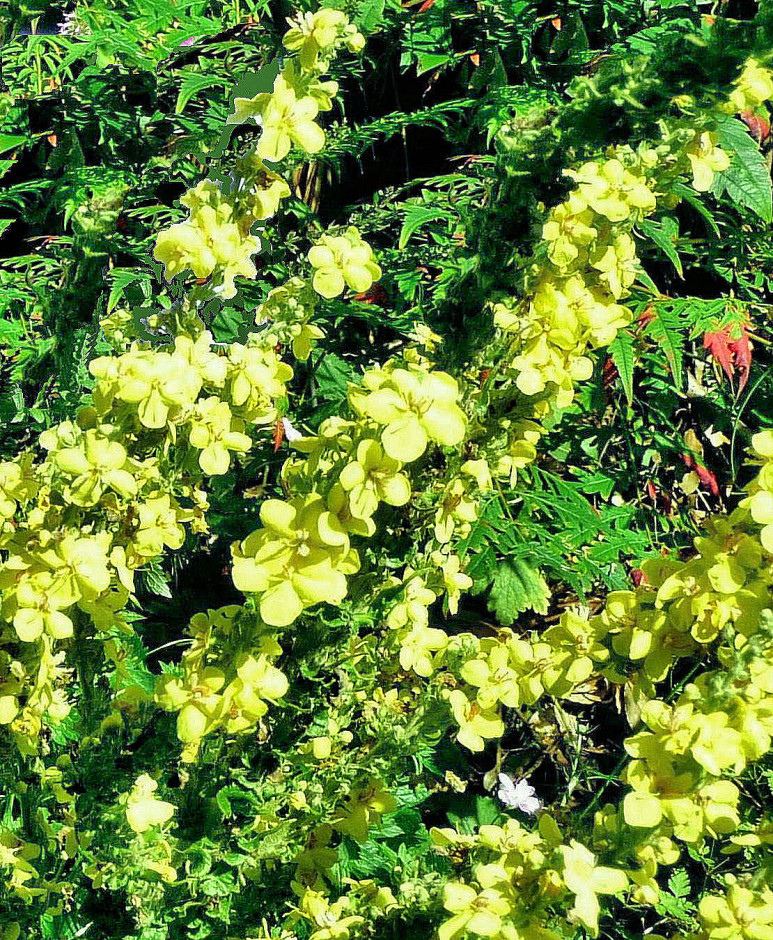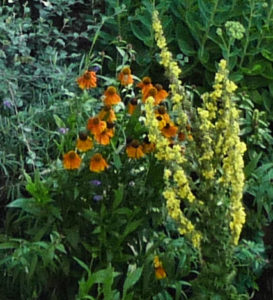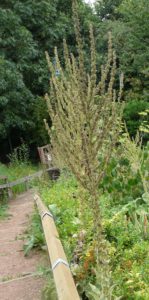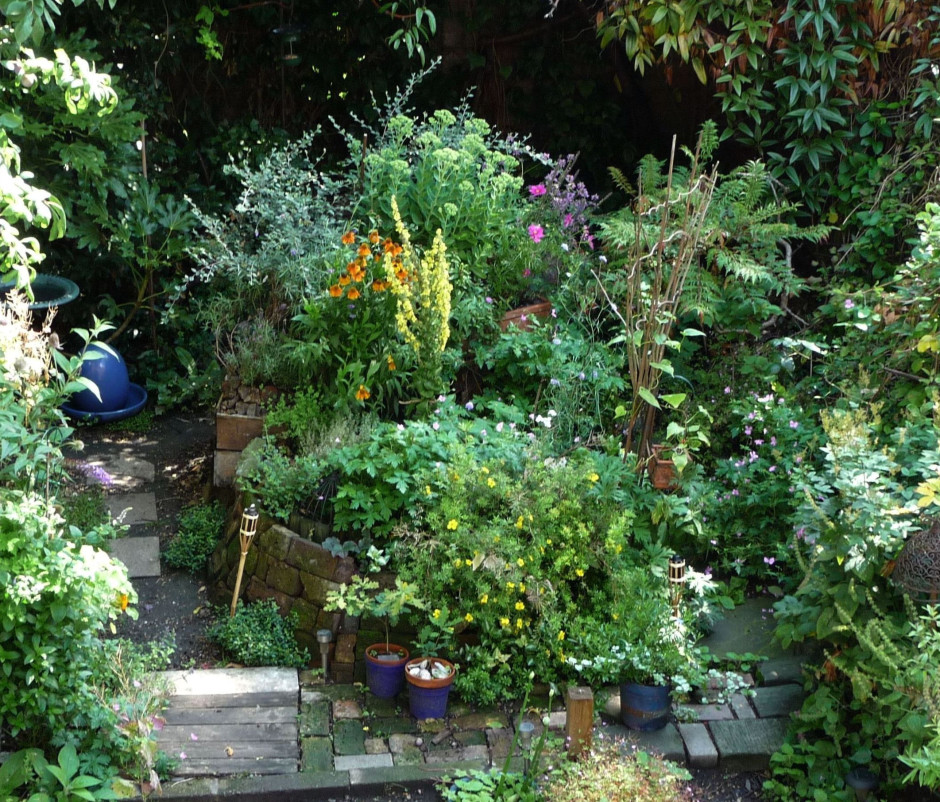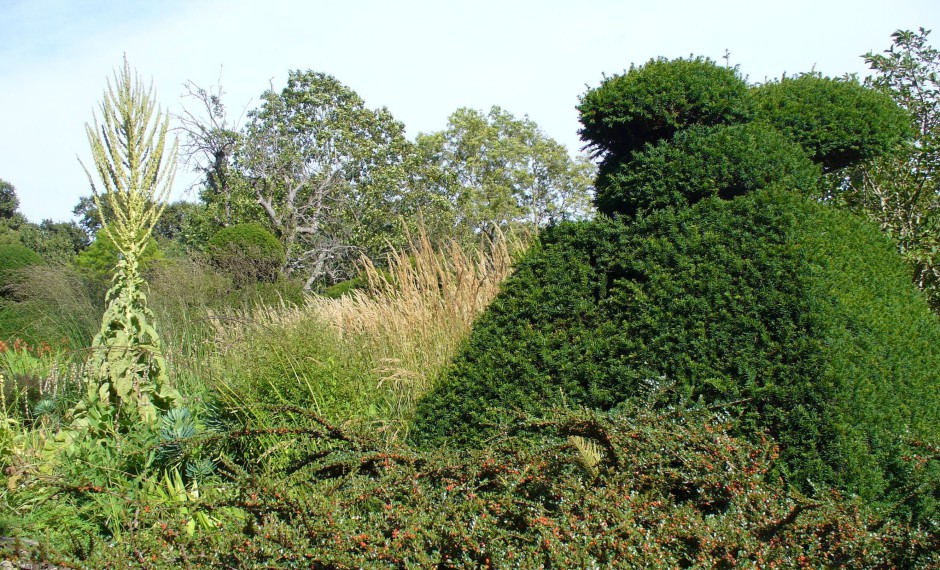VERBASCUM OLYMPICUM (Greek mullein)
Greece
Verbascum Olympicum is a drought-tolerant flowering shrub, a tall spike of flowers that loves full sun & prefers poor soil. In its first year it puts out a rosette of large, fuzzy grey leaves that lie flat to the ground.
In its second season, the plant will grow to reach nearly two metres. Between June & October its soft fuzzy grey spikes are covered in bright, buttery-YELLOW flowers that bring in the pollinators. The plant is quite dramatic, but shortlived… it may expire after its glorious summer display.
This is one of over 300 Mulleins from Central & Southern Europe to the Middle East & North Africa.
The plant’s name, Verbascum, may come from the Latin ‘ver’ (spring) and ‘barbatus’ (beard), which refers to the plant’s hairy stamens. Verbascum Olympicum is Native to Northwest Turkey (Wikipedia),
Olympicum means, strictly, ‘from Mount Olympus’ – but ‘Olympus’ may also translate as ‘heaven’, so the plant may be a gift from the gods.
Bees’ Favourite.
Verbascums are labelled ‘Perfect for Pollinators’ by the RHS. Many bees were indeed enthusiastic visitors to our Greek Mullein. Once the blooms had gone over small birds, especially the Great Tits, attached themselves to the plant’s spent flower spike and pecked their way through its seeds.
Herbal & Medicinal
 Our native Mullein, the statuesque Verbascum thapsus, was grown in monastery gardens to keep out the devil. One of its folknames is Our Lady’s Candle. Ihe flowers produce a yellow dye, used since Roman times to dye cloth & also used as a hair rinse.
Our native Mullein, the statuesque Verbascum thapsus, was grown in monastery gardens to keep out the devil. One of its folknames is Our Lady’s Candle. Ihe flowers produce a yellow dye, used since Roman times to dye cloth & also used as a hair rinse.
seednerds.com
Traditional uses of Verbascum have included tea made from leaves or flowers to treat bronchitis, chest colds and asthma; its antiviral and anti-inflammatory benefits are being investigated. In this episode of Danu’s Irish Herb Garden, Terri Conroy looks at our native Mullein & those medicinal treatments that may be made from it.
“Candlewick plant” refers to the old practice of using the dried down of mullein leaves & stems to make lamp wicks. The custom of using mullein for torches dates back at least to Roman times.
http://www.motherearthliving.com/Plant-Profile/herb-to-know-mullein-verbascum-thapsus
Other names: Aaron’s Rod, Beggar’s Blanket, Bouillon Blanc, Bullock’s Lungwort, Bunny’s ears, Candlewick Plant, Clot, Clown’s Lungwort, Donkey’s ears, Duffle, Feltwort, Flannel leaf, Fluffweed, Gorches, Graveyard Dust, Great Mullein, Hag’s Taper, Hare’s Bear, Herbe de St Fiacre, High Taper, Jacob’s staff, Jupiter’s staff, Old Lady’s Flannel, Old Man’s Flannel, Our Lady’s Flannel, Our Lord’s Flannel, Quaker Rouge, Shepherd’s Club, Shepherd’s Staff, Tinder Plant, Torches, Velvet Plant, Wild Ice, Wood Blade, Woolly Mullein.
Seven Greek candelabras grew in nearby Gillespie Park the season we grew our lone Mullein. Those seven had space all round them and got plenty of sunshine in the rock garden behind the Ecology Centre; they were still flowering when our Mullein had finished.
Verbascum Olympicum can grow to two metres (six feet). Ours fell short of that height, perhaps protesting to itself, ‘Where is my mountain?’
This Verbascum would have had plenty of space and light when it flowered in the garden at Great Dixter, leaving behind a dramatic architectural silhouette. It looks to have spent much of its time lecturing the topiary.
